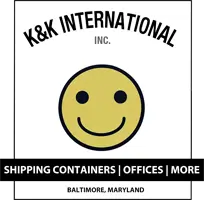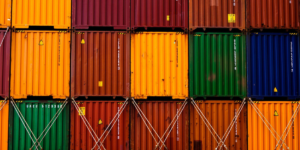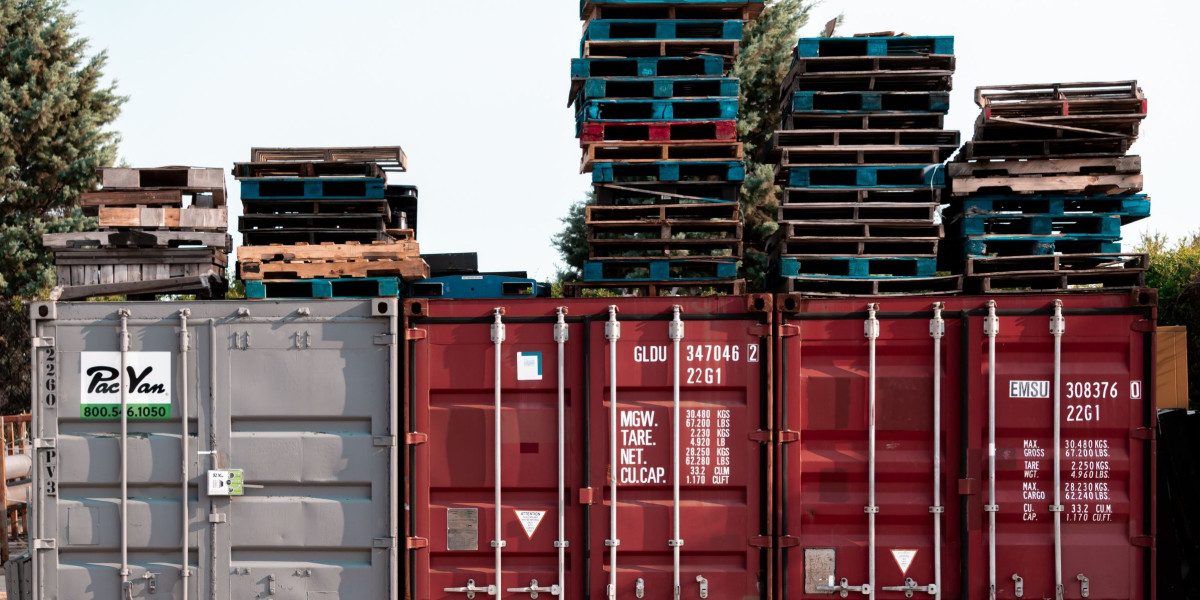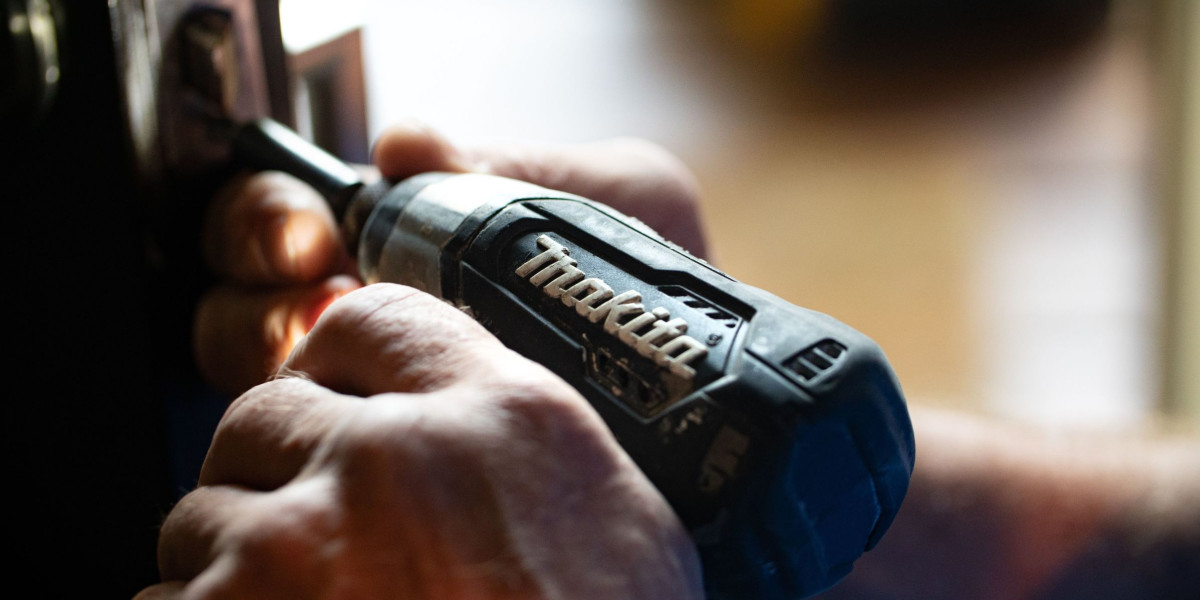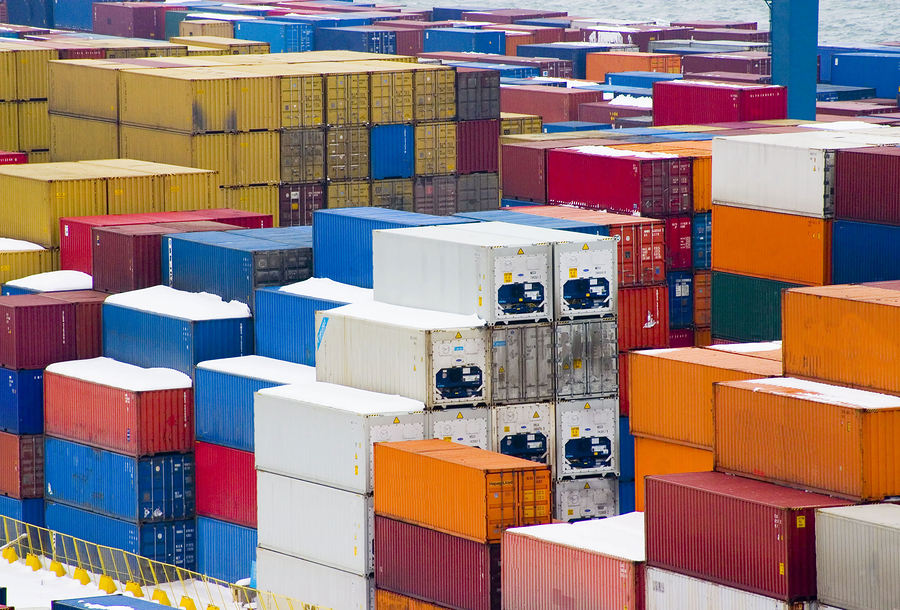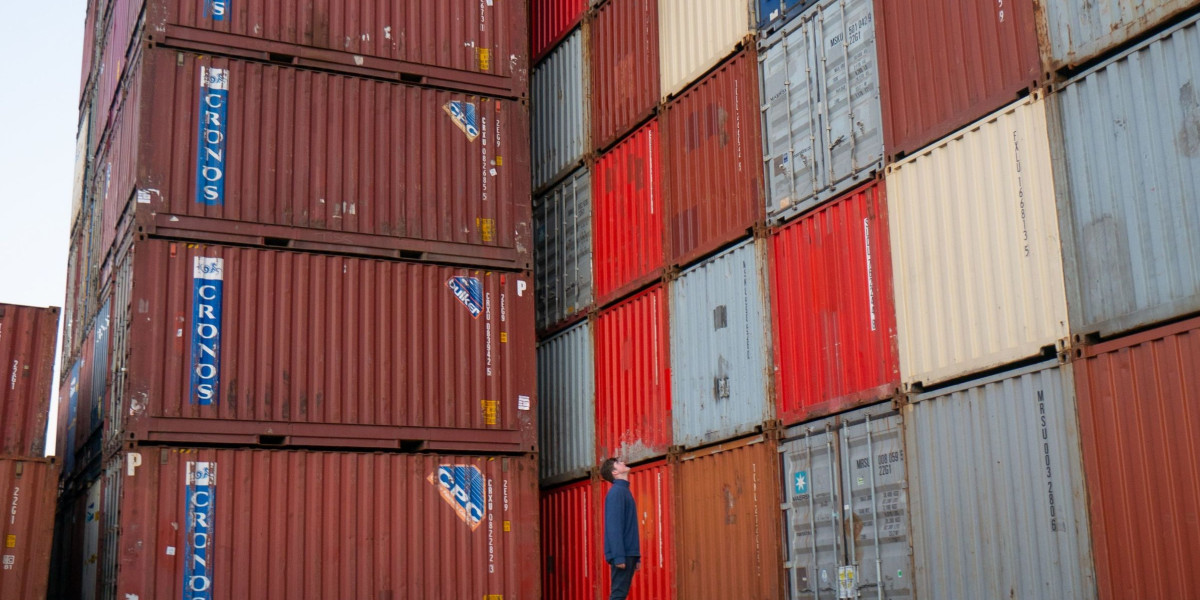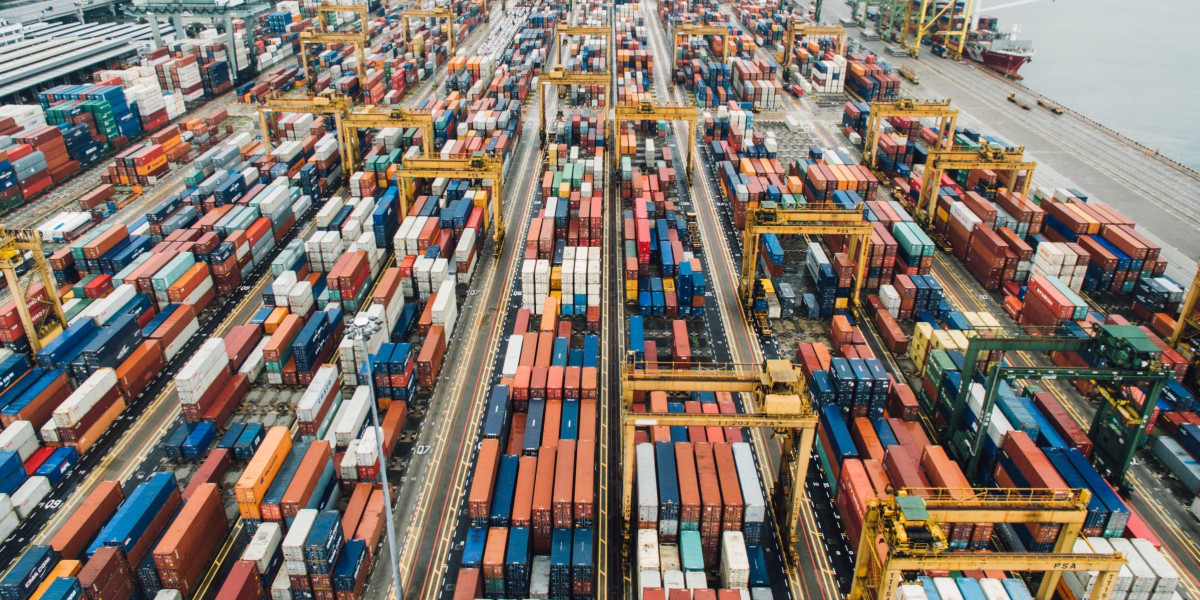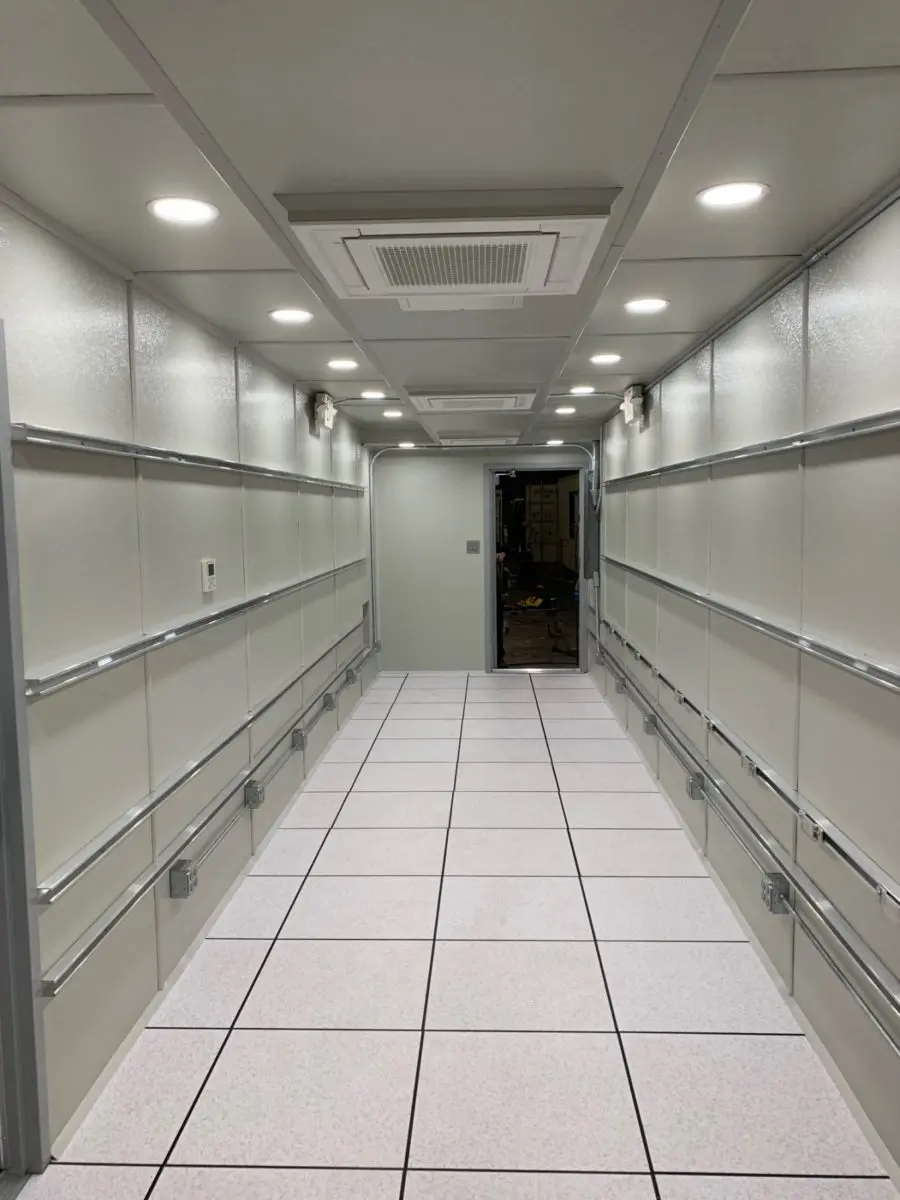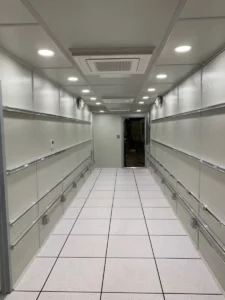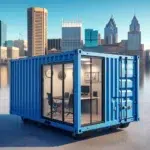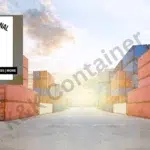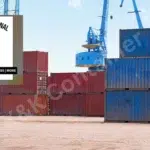The landscape of modern business and government infrastructure is witnessing an innovative transformation, largely driven by the repurposing of a (perhaps) unexpected hero – the shipping container. Once confined to the realms of transporting goods across oceans, these robust steel structures are now at the forefront of a creative revolution, finding new life as custom-built solutions for various commercial, business, and governmental needs.
1. The Rise of Custom-Built Containers
- Beyond Shipping: Initially designed for transporting goods, shipping containers are now being repurposed for their durability, modularity, and transportability, making them ideal for a range of commercial and governmental applications.
- Sustainable and Versatile: Their adaptation reflects a growing trend towards sustainability, as repurposing these containers gives them a new lease on life, reducing waste and the need for new materials.
- Customization Potential: The real allure lies in their versatility. From mobile offices and pop-up retail spaces to creative educational spaces and tactical government installations, the possibilities are as limitless as one’s imagination.
K&K International, Inc., nestled in the heart of Maryland and serving a broad region including Delaware, Pennsylvania, Virginia, West Virginia, and Washington D.C., has positioned itself as a leader in this dynamic field. With a 5-star rating and a reputation for excellence, we aren’t just transforming shipping containers; we’re reshaping the way businesses and governments think about space and structure.
In this comprehensive guide, we will explore the multifaceted world of custom-built shipping containers. Whether you are a small business owner curious about the possibilities, a retailer looking for innovative solutions, or a government official seeking efficient and mobile options, this resource will provide valuable insights and guidance.
From the historical evolution of shipping containers to the intricate process of customization, we cover every aspect to inform and inspire your journey into the world of custom-built containers.
2. The History and Evolution of Shipping Containers
The story of the shipping container is not just a tale of logistics and transportation; it’s a narrative of innovation and reinvention. From their humble beginnings as a tool for cargo transport to their present role as versatile structures, shipping containers have undergone a remarkable transformation.
From Sea to Land: The Origins of Shipping Containers:
- Beginnings in Transportation: The shipping container’s journey began in the mid-20th century. Designed for efficient transport of goods by sea, these containers standardized international trade, revolutionizing global commerce.
- Malcolm McLean’s Vision: The concept of modern shipping containers is credited to Malcolm McLean, an American entrepreneur. In 1956, he introduced the idea of a standardized, reusable container that could be easily transferred between trucks, trains, and ships, thereby simplifying the cargo transport process.
The Shift to Customization:
- Emergence of Surplus: With the proliferation of global trade, an abundance of shipping containers began accumulating in ports around the world. This surplus set the stage for an innovative reuse of these robust structures.
- Adaptation and Repurposing: Visionaries and entrepreneurs saw potential in these idle containers. They recognized that these steel boxes, known for their strength, durability, and modularity, could serve far beyond their initial purpose.
Custom-Built Containers Today:
- Beyond Storage and Transport: Today, shipping containers are celebrated for their adaptability. They have been transformed into commercial spaces, mobile offices, emergency housing, and more. These repurposed containers offer a unique blend of functionality and sustainability, making them a popular choice for a variety of applications.
- Innovation in Design: The evolution continues as architects and designers push the boundaries of creativity, turning shipping containers into sophisticated, tailor-made structures that meet specific commercial, business, and governmental needs.
At K&K International, Inc., we’re proud to be part of this evolutionary journey of shipping containers. We’ve witnessed first-hand the transformative impact these structures can have. As we delve deeper into the various applications and benefits of custom-built containers, it becomes clear that they are more than just a trend; they represent a sustainable and innovative solution for contemporary space management challenges.
3. Why Custom-Built Containers?
In today’s rapidly evolving business and governmental landscape, the need for innovative, flexible, and sustainable solutions is more pronounced than ever. Custom-built shipping containers are meeting this need head-on, offering a plethora of benefits that make them an attractive choice for a wide range of applications.
The Advantages of Custom-Built Containers:
- Eco-Friendly Choice: The reuse of shipping containers for custom projects exemplifies sustainability. This practice significantly reduces the carbon footprint by repurposing existing materials, thus contributing positively to the environment.
- Cost-Effective Solutions: When compared to traditional building methods, customizing shipping containers can be substantially more economical. The primary structure is already in place, which lowers construction and material costs.
- Versatile and Adaptable: Shipping containers are inherently modular, making them incredibly versatile. They can be transformed into anything from a compact office space to a spacious commercial outlet or a functional government facility.
- Durability and Security: Originally designed to withstand harsh oceanic conditions, shipping containers are incredibly durable. This robustness ensures that they are secure and can endure various climatic challenges, making them suitable for long-term use.
Meeting Diverse Needs:
- For Small Businesses and Retailers: Custom containers offer small businesses and retailers an opportunity to establish a physical presence without the high overhead costs of traditional brick-and-mortar spaces. Their mobility allows businesses to experiment with location and layout with relative ease.
- In Educational and Institutional Sectors: Schools and institutions can benefit from the quick deployment of custom-built containers as temporary classrooms, labs, or storage spaces during renovations or expansions.
- Government and Military Applications: For government and military use, the portability and security of these containers are particularly advantageous. They can be utilized for everything from mobile command centers to emergency housing in disaster-stricken areas.
At K&K International, Inc., we understand the unique challenges and opportunities that different sectors face. Our custom-built containers are designed with these diverse needs in mind. By leveraging the adaptability and resilience of shipping containers, we provide innovative solutions that are not just practical but also environmentally responsible and cost-effective.
4. Types of Custom-Built Containers
The versatility of shipping containers in the commercial, business, and governmental sectors is largely due to the wide range of customization options available. Understanding the types of containers and their potential modifications can open a world of possibilities for organizations seeking innovative solutions.
Standard Shipping Containers vs. Custom-Built Variants:
- Standard Containers: These are the containers traditionally used for shipping goods. Common sizes include 20-foot and 40-foot lengths, with standard or high cube heights. They provide a robust base structure for modifications.
- Custom-Built Containers: These are standard containers transformed through various alterations to serve specific purposes. Customization can range from simple modifications like adding windows and doors to complex conversions like combining several containers for a larger structure.
Specialized Containers for Different Applications:
Retail and Small Businesses:
- Pop-up Shops: Compact and mobile, ideal for seasonal sales or marketing events.
- Mobile Offices: Tailored for businesses needing a relocatable workspace.
- Storage Units: Secure and weather-resistant, perfect for excess inventory.
Educational and Institutional Uses:
- Temporary Classrooms: A quick solution for schools during renovations or expansions.
- Modular Labs: Customized with necessary utilities for scientific research.
- Libraries/Study Spaces: Designed for comfort and utility in academic settings.
Government and Military Applications:
- Emergency Response Units: Equipped for rapid deployment in crisis situations.
- Tactical Operations Centers: Secure and transportable for field operations.
- Storage Facilities: For secure, weatherproof storage of equipment and documents.
Custom Features and Modifications:
Functional Adaptations:
- Insulation for climate control.
- Electrical and plumbing installations for full utility.
- Custom shelving and storage solutions.
- Aesthetic Enhancements:
- Exterior branding and painting.
- Interior design tailored to specific brand identities or functional needs.
- Window installations and skylights for natural lighting.
At K&K International, Inc., we understand that every client has unique needs and visions for their custom container. Our expertise lies in not just understanding the various types of containers and their potential but in meticulously crafting them to meet and exceed our clients’ expectations.
5. Custom-Built Containers in the Commercial Sector
In the bustling commercial sector, the adaptability and efficiency of custom-built containers are being leveraged in innovative and impactful ways. These repurposed structures offer practical, cost-effective, and unique solutions that cater to diverse business needs. Let’s explore how different industries are utilizing these versatile units.
Retail and Small Business Applications:
- Pop-Up Shops: These temporary retail spaces have gained popularity, particularly in urban areas and during seasonal markets. Custom containers offer an attractive, mobile solution that can travel to different locations, attracting new customers and creating buzz.
- Mobile Offices: For businesses that require flexible office spaces, especially in industries like construction or event management, container-based offices provide a practical and relocatable workspace solution.
- Special Event Booths: From trade shows to local fairs, custom containers can be transformed into eye-catching booths. Their unique aesthetics and the ability to brand the exteriors make them ideal for marketing and sales events.
Educational and Institutional Applications:
- Temporary Classrooms: Schools undergoing renovation or experiencing space constraints can utilize container-based classrooms as an effective temporary solution. These units can be outfitted with necessary educational tools and climate control for a comfortable learning environment.
- Modular Laboratories: Educational institutions and research facilities can benefit from custom-built container labs. These units can be designed with specific technical requirements in mind, such as ventilation systems, storage for chemicals, and durable work surfaces.
- Storage for Sports and Extracurricular Activities: Containers provide secure, weather-resistant storage options for sports equipment, musical instruments, and other extracurricular gear.
Government and Military Use Cases:
- Emergency and Disaster Relief Housing: In times of crisis, quick deployment of shelter is crucial. Custom containers can be rapidly transformed into emergency housing units, offering a secure and weather-resistant refuge.
- Mobile Command Centers: The military and other governmental bodies often require mobile, secure, and durable structures for field operations. Custom-built containers can be outfitted with communication technologies, secure storage, and office facilities.
- Document and Equipment Storage: For secure, climate-controlled storage of sensitive documents or specialized equipment, custom containers offer an ideal solution. Their robust structure and customization options ensure both security and accessibility.
Our team specializes in transforming these versatile steel structures to meet the specific needs of clients across the East coast. Now let’s look at specific features and customization options available, providing insights into how these containers are transformed into functional and innovative spaces.
Custom-Built Containers for Small Businesses
In the realm of small businesses, where agility and innovation are key, custom-built shipping containers offer a unique blend of functionality, affordability, and style. These versatile structures are particularly beneficial for small enterprises looking to make a big impact with limited resources. Let’s explore how custom containers are becoming a game-changer for small businesses.
Tailored to Small Business Needs:
- Cost-Effective Expansion: For small businesses, expansion can be a significant financial challenge. Containers offer a more affordable alternative to traditional building expansions or rentals.
- Unique Branding Opportunity: The distinctive look of a container can serve as a powerful marketing tool. Customized designs and branding can turn these structures into eye-catching symbols of a business.
- Flexibility and Mobility: The ability to relocate is especially advantageous for small businesses exploring new markets or participating in events. Containers can be easily moved and set up in different locations, offering great versatility.
Creative Applications and Innovations:
- Boutique Retail Stores: Small retailers are turning containers into chic boutique spaces, offering a unique shopping experience that stands out from conventional stores.
- Artisanal Workshops: Artists, craftsmen, and makers are finding containers to be ideal spaces for workshops and studios, combining work and display areas in one compact, customizable space.
- Pop-Up Cafés and Eateries: The food and beverage industry is utilizing containers for pop-up cafes, bars, and food trucks, capitalizing on the trend of mobile dining experiences.
For small businesses, custom-built containers are not just about solving space issues; they are a strategic choice for growth, branding, and customer engagement. As we move forward, we will examine the practical aspects of how these containers are modified for different uses in the educational and institutional sectors, showcasing their versatility and adaptability to various needs.
6. Educational and Institutional Applications
The adaptability of custom-built shipping containers extends beyond commercial and business applications, offering unique solutions in the realm of education and institutions. These structures are increasingly being recognized for their potential to address various space-related challenges in academic and institutional settings.
Containers as Educational Spaces:
- Temporary Classrooms: During school renovations or to manage overflow, containers provide a quick and cost-effective solution for additional classroom space. These temporary classrooms can be outfitted with essential educational technology and comfortable furnishings.
- Specialized Learning Areas: For subjects that require specific environments, like art, music, or science, containers can be transformed into dedicated labs or studios, equipped with the necessary tools and equipment.
- Outdoor Learning and Recreation: Containers can be modified into open-air learning spaces or recreational areas, providing students with a unique outdoor educational experience.
Institutional Utilization:
- Library Extensions and Book Depositories: Academic institutions and public libraries facing space constraints can use containers as additional storage or reading areas. Their customization can include climate control systems to preserve books and documents.
- Administrative Offices: For institutions undergoing expansion or requiring temporary administrative offices, containers offer a practical solution. They can be designed to include workstations, meeting areas, and storage cabinets.
- Emergency and Disaster Preparedness: In the context of institutional emergency planning, containers can be fitted as emergency supply storage, providing a secure and accessible location for essential items like first aid kits, food supplies, and emergency equipment.
7. Government and Military Uses
Custom-built shipping containers have carved a niche in governmental and military operations, offering solutions that are not only practical and robust but also highly adaptable to the unique demands of these sectors. Their strength, security, and modularity make them ideal for a range of critical applications.
Strategic Applications in Government Projects:
- Emergency and Disaster Relief Shelters: In emergency situations, rapid response is crucial. Custom containers can be swiftly transformed into temporary shelters or medical facilities, providing immediate relief in disaster-affected areas.
- Mobile Offices and Command Centers: For government projects that require mobility, such as road construction or community outreach programs, containers serve as excellent mobile offices or command centers, equipped with necessary communication and office tools.
- Secure Storage for Sensitive Materials: When it comes to storing sensitive documents or equipment, the security offered by shipping containers is unparalleled. Custom modifications can further enhance their security, making them ideal for governmental use.
Military Utilization:
- Field Operations and Tactical Bases: The military often operates in varied and remote environments where traditional infrastructure is not feasible. Custom containers can be used to quickly establish field bases, tactical operation centers, and storage units.
- Training Facilities: Military training exercises require versatile environments. Containers can be modified into training facilities, simulating different scenarios and terrains for effective training.
- Transportable Housing Units: In deployments or exercises, providing comfortable living quarters is a necessity. Containers can be outfitted with living essentials, offering a portable and secure housing solution for military personnel.
8. The Design and Customization Process
Transforming a standard shipping container into a bespoke space tailored for commercial, business, or governmental use involves a series of meticulous steps. This process, central to the success of a custom-built container project, combines creativity with technical expertise. K&K International, Inc., with its extensive experience, navigates this process with precision and innovation, ensuring each container meets the specific needs of its clients.
Initial Consultation and Conceptualization:
- Client Vision: The process begins with understanding the client’s vision, needs, and expectations for the container. This step involves detailed discussions about the intended use, design preferences, and any special requirements.
- Feasibility Assessment: K&K International, Inc. evaluates the feasibility of the project, considering factors like container size, location, and any technical constraints.
Design Phase:
- Creating Blueprints: Based on the initial consultations, draft designs and blueprints are developed. These serve as the initial visual representation of the concept.
- Iterative Feedback: Clients are involved throughout the design phase, providing feedback and approvals to ensure the final design aligns perfectly with their vision.
Physical Transformation:
- Structural Modifications: This includes structural changes such as cutting for windows and doors, installing partitions, or combining multiple containers for larger spaces.
- Interior and Exterior Customizations: Depending on the project, this can range from basic insulation and electrical fittings to more complex installations like custom cabinetry, specialized lighting, and branded exteriors.
Quality Assurance and Compliance:
- Safety and Compliance Checks: Each custom container undergoes thorough inspections to ensure it meets safety standards and complies with relevant regulations, particularly important in government and military applications.
- Final Walkthrough: Before delivery, a final inspection and walkthrough are conducted with the client to guarantee complete satisfaction with the finished product.
Delivery and Installation:
- Transportation to Site: K&K International, Inc. coordinates the transportation of the container to its final location, whether it’s within Maryland or across state lines.
- On-Site Setup: The container is installed and set up on-site, with any final on-site modifications or adjustments made to ensure full functionality and readiness for use.
The design and customization process of shipping containers is a blend of art and engineering. It requires a deep understanding of both the client’s vision and the technical nuances of container modification. As we proceed, we will delve into the regulations and compliance aspects that are critical to the successful implementation of these custom container projects.
9. Regulations and Compliance
Navigating the regulatory landscape is a critical aspect of any custom-built container project, especially when these structures are used for commercial, business, or government purposes. Compliance with local, state, and federal regulations not only ensures the legality of the container’s use but also guarantees safety and functionality. K&K International, Inc. places a strong emphasis on adhering to these regulations throughout the customization process.
Understanding Zoning and Building Codes:
- Zoning Laws: Zoning regulations can vary significantly from one jurisdiction to another. It’s crucial to understand what types of structures are permitted in a given area, especially when containers are used for retail, office, or public use.
- Building Codes: Compliance with building codes is essential to ensure that the container structure is safe for occupancy. This includes adhering to standards related to structural integrity, fire safety, electrical wiring, and plumbing.
Compliance with Safety and Environmental Regulations:
- Safety Standards: Containers must be modified in compliance with safety standards, which may include aspects like emergency exits, ventilation systems, and structural reinforcement. This is particularly crucial for containers purposed for public access or housing sensitive equipment.
- Environmental Compliance: Especially relevant in governmental projects, environmental compliance involves ensuring that container modifications do not adversely impact the local ecosystem. This could involve using eco-friendly materials and ensuring waste disposal aligns with environmental guidelines.
Permits and Documentation:
- Acquiring Necessary Permits: Before a container can be repurposed and deployed, necessary permits must be obtained from the relevant local authorities. These permits might relate to construction, installation, and even occupation.
- Documentation: Maintaining a record of all modifications, inspections, and compliance checks is vital. This documentation is essential not only for regulatory purposes but also for future reference and maintenance.
Navigating Challenges:
- Expert Guidance: K&K International, Inc. provides expert guidance to its clients throughout the regulatory maze. They help in identifying the necessary permits, complying with local codes, and ensuring that the custom container meets all legal requirements.
- Local Insights: With their extensive experience in various states, including Maryland, Pennsylvania, Virginia, and others, K&K International, Inc. possesses in-depth knowledge of regional regulatory nuances, which is invaluable in smoothly navigating the compliance process.
Compliance with regulations and adherence to safety and environmental standards are non-negotiable aspects of custom container projects. They not only ensure the legality and longevity of the structure but also enhance its functionality and safety. In the next segment, we will explore the maintenance and upkeep strategies for these custom-built containers, ensuring they remain functional, safe, and aesthetically pleasing long after their deployment.
10. Maintenance and Upkeep
Ensuring the longevity and sustained appeal of custom-built shipping containers requires a proactive approach to maintenance and upkeep. These structures, while inherently durable, still need regular care to remain in optimal condition, especially when repurposed for commercial, business, or government use. K&K International, Inc. emphasizes the importance of maintenance, providing guidance and support to maximize the lifespan of these versatile units.
Best Practices for Maintaining Custom-Built Containers:
- Regular Inspections: Routine checks are vital to identify and address issues such as corrosion, leaks, or structural wear. This is especially important in regions with harsh weather conditions or where containers are exposed to environmental stressors.
- Corrosion Prevention: Containers, originally designed for maritime shipping, are susceptible to rust. Regular application of protective coatings and prompt attention to any rust spots help in preserving the container’s integrity.
- Climate Control Maintenance: For containers equipped with HVAC systems, regular servicing ensures they remain efficient and effective, providing comfortable conditions within the unit regardless of external weather conditions.
Sustainability and Eco-Friendliness:
- Energy Efficiency: Containers modified for human occupancy should ideally incorporate energy-efficient solutions. This includes LED lighting, eco-friendly insulation, and, where feasible, renewable energy sources like solar panels.
- Recycling and Repurposing: Even when a container reaches the end of its usable life in one form, exploring options for recycling or repurposing materials can contribute to sustainability efforts.
Dealing with Wear and Tear:
- Interior Care: Regular cleaning, checking for dampness, and ensuring the interior remains dry and well-ventilated help maintain the container’s internal condition.
- Exterior Upkeep: The exterior of a container can be subjected to considerable wear. Regular cleaning, along with checking for and addressing any exterior damage, maintains its aesthetic appeal and structural integrity.
Support and Assistance from K&K International, Inc.:
- Expert Advice: K&K International, Inc. offers continued support and advice on maintaining custom containers, ensuring clients have access to the necessary knowledge and resources.
- After-Sales Services: Understanding that maintenance needs can evolve, K&K International, Inc. provides after-sales services to assist with ongoing maintenance and any further modifications required over the container’s lifespan.
Maintenance and upkeep are crucial for the long-term viability and functionality of custom-built containers. They not only ensure that these structures continue to serve their intended purpose effectively but also contribute to the sustainability of the investment. In our next segment, we will explore real-life success stories and case studies, demonstrating the impactful applications of custom containers in various sectors, and showcasing how businesses, schools, and government entities have effectively utilized these innovative solutions provided by K&K International, Inc.
11. Getting Started with Your Custom Container Project
Embarking on a custom container project is an exciting venture, filled with creative possibilities. Whether you’re a business owner, school administrator, or government official, the process begins with a clear vision and the right partner to bring it to fruition. K&K International, Inc. offers a seamless, customer-focused approach to ensure your custom container project is successful from conception to completion.
Initial Steps to Launch Your Project:
- Identify Your Needs: Start by defining the purpose of your container. Will it be a mobile office, a classroom, a retail space, or something entirely unique? Understanding your specific needs will guide the customization process.
- Sketch Your Ideas: Even rough sketches or a list of desired features can be a great starting point. Think about the size, layout, essential amenities, and any special requirements like security features or technology integrations.
Contacting Our Team:
- Reach Out for a Consultation: Contact K&K International, Inc. to discuss your project. Their team of experts is ready to listen to your ideas, offer professional advice, and answer any initial questions you may have.
- Site Evaluation and Feasibility Study: If needed, K&K International, Inc. can conduct a site visit to assess the feasibility of your project, considering factors like location, space, and accessibility.
Design and Customization Process:
- Collaborative Design Phase: Work with K&K International, Inc.’s design team to refine your concept. Through an iterative process, they will help transform your initial ideas into a practical and aesthetically pleasing design.
- Approval and Finalization: Once the design is finalized and approved by you, K&K International, Inc. will proceed with the customization of your container, keeping you informed and involved at every stage.
Project Completion and Aftercare:
- Delivery and Installation: K&K International, Inc. oversees the transportation and installation of your custom container, ensuring it is set up and functioning as intended.
- Post-Installation Support: After your container is operational, K&K International, Inc. remains available for any further assistance, maintenance advice, or additional modifications you may require in the future.
Embarking on your custom container project is an opportunity to innovate and redefine your space. With K&K International, Inc., you have a partner who understands your vision and possesses the expertise to make it a reality. Reach out today to start your journey towards a unique, customized solution that meets your specific needs and aspirations.
12. Frequently Asked Questions about Custom-Built Containers
When considering a custom-built container for your business or project, numerous questions and concerns may arise. Addressing these queries is key to making an informed decision. K&K International, Inc. regularly encounters a range of questions from clients across Delaware, Pennsylvania, Virginia, West Virginia, Maryland, and Washington D.C.
Here, we’ve compiled some of the most frequently asked questions to provide clarity and guidance:
How Long Does the Customization Process Take?
The timeline varies depending on the complexity of the project. A basic modification might take a few weeks, while more intricate designs can take several months. K&K International, Inc. provides a projected timeline after the initial consultation.
Are There Limitations on How Containers Can Be Customized?
While there are some structural limitations, shipping containers offer a high degree of flexibility. Customizations can range from adding doors and windows to complex modifications like multi-container structures.
Is it Possible to Move the Container Once It’s Customized?
Yes, one of the advantages of using shipping containers is their portability. Custom containers can be designed for easy relocation, although some modifications may affect their mobility.
How Do Zoning Laws Affect Container Installation?
Zoning laws vary by location. It’s important to check with local authorities about regulations concerning container use. K&K International, Inc. can assist in navigating these regulations.
What Kind of Maintenance is Required?
Custom containers require maintenance like any traditional building. Regular checks for structural integrity, rust, and wear are recommended. K&K International, Inc. provides guidance on maintenance practices.
Can Containers Be Made Eco-Friendly?
Absolutely. Containers can be fitted with sustainable materials, energy-efficient insulation, and even solar panels to enhance their environmental friendliness.
Are Custom Containers Weather-Resistant?
Shipping containers are designed to withstand harsh marine environments, making them inherently weather-resistant. Additional modifications can further enhance their resilience to specific climatic conditions.
How Does the Cost Compare to Traditional Construction?
Generally, custom containers are more cost-effective than traditional construction, especially when considering the speed of installation and reduced labor costs. The total cost will depend on the extent of customization.
The Bottom Line
The journey through the world of custom-built shipping containers reveals a realm of limitless possibilities. These robust, versatile structures have transcended their original purpose, emerging as innovative solutions for a myriad of needs across the commercial, business, and governmental sectors. The adaptability, sustainability, and cost-effectiveness of custom containers make them an increasingly popular choice, offering a unique blend of functionality and creativity.
At K&K International, Inc., we take pride in leading this transformative movement. With our expertise, creativity, and commitment to quality, we have helped numerous clients across Delaware, Pennsylvania, Virginia, West Virginia, Maryland, and Washington D.C. turn their visions into reality. Our journey with each client, from the initial concept to the final installation, is marked by a collaborative spirit and a dedication to excellence.
The potential of custom-built containers is bound only by imagination. Whether it’s creating an engaging retail space, an innovative educational environment, a functional government facility, or a bespoke business solution, these containers offer a unique canvas for innovation.
We’re more than a service provider – we are your partner in innovation. By choosing us, you’re not just getting a custom-built container; you’re getting a dedicated team that values your vision and is committed to excellence. Let’s start this journey together, transforming your ideas into remarkable realities that go beyond the ordinary. Reach out to us now and take the first step towards an exciting and successful custom container project.
